Home>Garden Essentials>What To Use Instead Of Celery Seeds
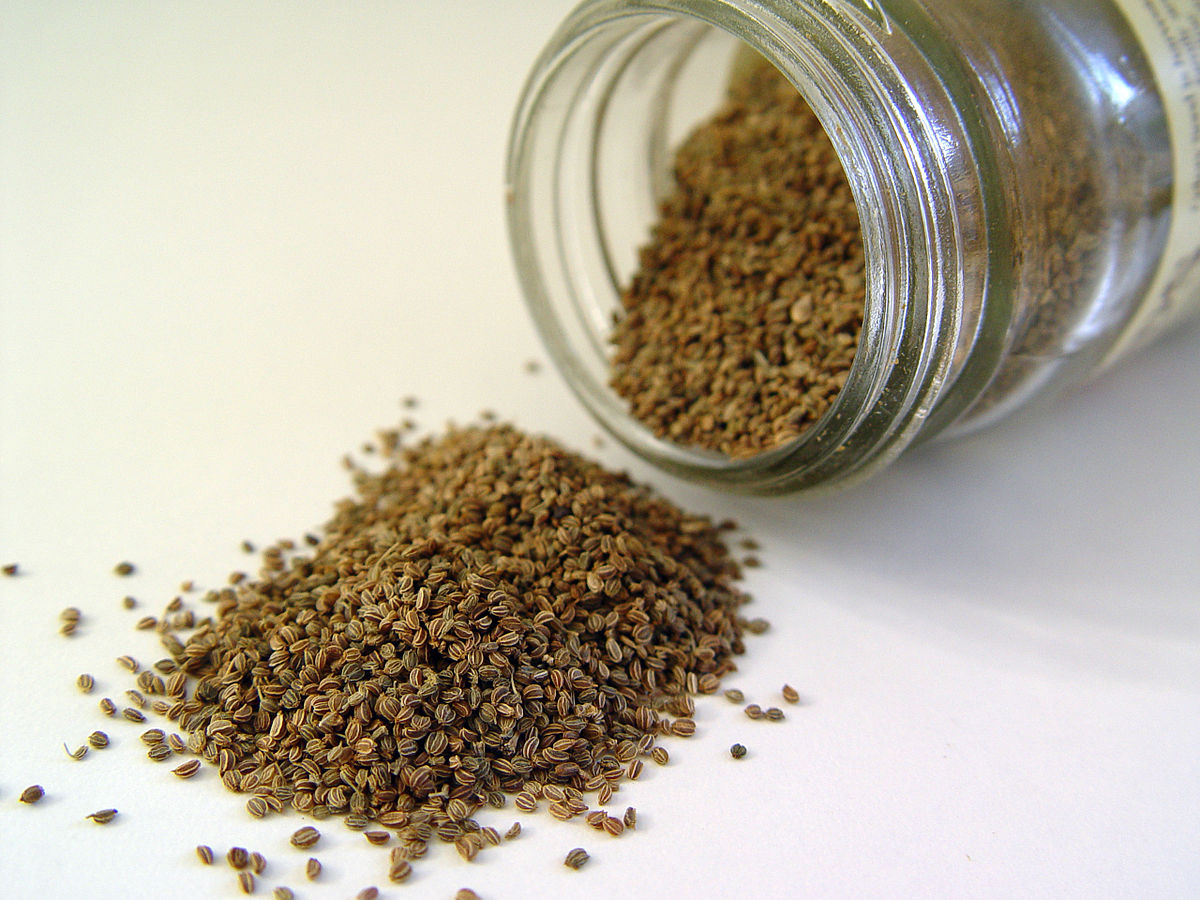

Garden Essentials
What To Use Instead Of Celery Seeds
Modified: March 15, 2024
Looking to replace celery seeds in your garden? Discover alternative options and find the perfect substitute for your gardening needs.
(Many of the links in this article redirect to a specific reviewed product. Your purchase of these products through affiliate links helps to generate commission for Storables.com, at no extra cost. Learn more)
Introduction
Gardeners and cooks alike are often familiar with the distinct flavor and aroma that celery seeds bring to recipes. These tiny aromatic seeds are commonly used in a variety of dishes, such as soups, stews, salads, and pickles. However, there may be times when you find yourself out of celery seeds or unable to consume them due to dietary restrictions. This is where knowing suitable alternatives can come in handy.
In this article, we will explore various substitutes for celery seeds that can be used to recreate similar flavors and enhance your culinary creations. Whether you’re looking to add a touch of celery-like taste to your dishes or seeking alternatives for health or dietary reasons, we’ve got you covered.
Before we delve into the alternatives, it’s important to understand what makes celery seeds unique. These seeds are derived from the celery plant (Apium graveolens) and possess a robust and aromatic flavor that is reminiscent of the vegetable itself. Celery seeds are often described as having a combination of tangy, earthy, and slightly bitter taste, with hints of parsley and celery.
Now, let’s explore the substitutes that can be used in place of celery seeds to infuse your dishes with delightful flavors and a touch of creativity.
Key Takeaways:
- Try using fresh celery stalks or leaves, celery salt, celeriac, fennel seeds, or dried parsley as substitutes for celery seeds to add similar flavors to your dishes, even if you have dietary restrictions or run out of celery seeds.
- Experiment with caraway seeds, dill seeds, or lovage as creative alternatives to celery seeds, each offering unique flavors to enhance your culinary creations and cater to your specific tastes and dietary needs.
Read more: What Can I Use Instead Of Celery Seed
Why look for alternatives to celery seeds
While celery seeds offer a unique flavor profile, there are several reasons why you may need to seek alternatives. Here are a few scenarios where finding substitutes for celery seeds can be beneficial:
- Dietary Restrictions: Some individuals may have dietary restrictions or allergies that prevent them from consuming celery seeds, such as those with celery allergies or strict low-sodium diets. In such cases, knowing suitable alternatives allows you to still enjoy similar flavors without compromising your health or dietary needs.
- Ingredient Availability: It’s not uncommon to run out of certain ingredients in the middle of preparing a dish. If you find yourself without celery seeds, having alternative options on hand can save you time and effort from having to visit the grocery store.
- Preference: Personal taste preferences can also play a role in seeking alternatives to celery seeds. Not everyone enjoys the distinct flavor that celery seeds impart, so having options that provide similar notes can help create dishes that align with individual preferences.
By exploring substitutes for celery seeds, you can adapt recipes, experiment with flavors, and create dishes that suit your specific needs and tastes. Now, let’s take a closer look at the alternatives that can be used to replace celery seeds in your culinary endeavors.
Substitutes for celery seeds
If you’re in need of a celery seed alternative, there are several options available that can provide similar flavors and enhance your dishes. Let’s explore some of the substitutes:
-
Celery stalks
One of the most readily available options is to use fresh celery stalks. Celery stalks have a milder flavor compared to the seeds but still carry the familiar celery taste. Chop the celery stalks and use them in your recipe to add a subtle crunch and celery-like flavor.
-
Celery leaves
Don’t discard the celery leaves! They are bursting with flavor and can be an excellent substitute for celery seeds. Chop the leaves finely and incorporate them into your dishes for a fresh and herbal taste.
-
Read more: What To Use Instead Of Chia Seeds
Celery salt
If you’re looking for a concentrated celery flavor, celery salt can be a handy substitute. It is a blend of ground celery seeds and salt, providing a more intense taste. Remember to adjust the salt content in your recipe accordingly if you use celery salt.
-
Celeriac
Celeriac, also known as celery root, is a versatile vegetable that can be used as a substitute for celery seeds. It has a mild, earthy flavor and can be grated, cubed, or pureed to add a celery-like taste to your dishes.
-
Fennel seeds
Fennel seeds share some similarities with celery seeds in terms of flavor. They have a slightly sweet and licorice-like taste that can complement various recipes. Crush or grind fennel seeds and use them as a substitute for celery seeds.
-
Dried parsley
Dried parsley can bring a hint of celery-like flavor to your dishes. While it doesn’t possess the exact same profile as celery seeds, it can still add a fresh, herbal taste. Use it as a substitute in soups, sauces, or dressings.
-
Read more: What Do You Use Celery Seed For
Caraway seeds
Caraway seeds have a distinct flavor that can resemble celery seeds to some extent. They have a slightly sweet and earthy taste with hints of anise. Crush or grind caraway seeds and use them as a substitute in your recipes.
-
Dill seeds
Dill seeds offer a unique flavor that can work well as a substitute for celery seeds. They have a tangy and slightly bitter taste with a hint of sweetness. Incorporate crushed or ground dill seeds into your dishes for a different but delicious flavor profile.
-
Lovage
Lovage is a herb that belongs to the same family as celery and shares a similar taste. Its flavor is reminiscent of celery with hints of parsley and anise. Use lovage leaves or stems as a substitute for celery seeds to impart a distinct flavor to your recipes.
By exploring these substitutes, you can find the perfect alternative for your specific dish and enjoy the flavors of celery seeds without having to use the actual seeds themselves.
Whether you choose to use fresh celery stalks, celery leaves, celery salt, celeriac, fennel seeds, dried parsley, caraway seeds, dill seeds, or lovage, these alternatives can provide similar tastes and enhance the flavors of your recipes. Experiment, have fun, and adapt your dishes to suit your preferences and dietary needs.
Now that you’re armed with these substitutes, you can confidently explore new recipes and create flavorful meals without the need for celery seeds. Happy cooking!
Celery stalks
Celery stalks are one of the easiest and most accessible substitutes for celery seeds. They have a milder flavor compared to the seeds but still carry the familiar celery taste that can enhance your dishes.
To use celery stalks as a substitute, simply chop them into small pieces and add them to your recipe. Whether you’re making a soup, stir-fry, or salad, the celery stalks can provide a subtle crunch and a hint of celery-like flavor.
One advantage of using celery stalks is that they are readily available in most grocery stores year-round. They also have a high water content, which can add moisture to your dishes. If your recipe requires cooking for an extended period, consider adding the celery stalks towards the end to retain their crispness and flavor.
Keep in mind that the texture of celery stalks is different from celery seeds, so they may not provide the exact same mouthfeel or aromatic intensity. However, they still offer a refreshing taste that can complement a variety of recipes.
In addition to their flavor contribution, celery stalks also offer numerous health benefits. They are low in calories and high in fiber, making them a great choice for those seeking a nutrient-rich addition to their meals. Celery stalks are also a good source of vitamins such as vitamin K, vitamin C, and potassium.
When using celery stalks as a substitute for celery seeds, consider adjusting your recipe accordingly. The seeds have a more concentrated flavor, so you might need to use a larger quantity of celery stalks to achieve a similar taste. Start with a small amount and gradually increase to suit your preference.
Celery stalks can be a versatile and practical substitute for celery seeds, especially when you need a quick and accessible alternative. Whether you’re making a savory dish, a salad, or a stir-fry, the mild flavor and crisp texture of celery stalks can elevate your culinary creations and provide a touch of freshness.
Experiment with different recipes and find creative ways to incorporate celery stalks into your dishes. Not only will you enjoy the vibrant taste, but you’ll also benefit from the nutritional value that celery stalks bring to the table.
Read more: How To Use Celery Seeds
Celery leaves
Don’t let the celery leaves go to waste! They can be a wonderful substitute for celery seeds and add a fresh and herbal taste to your dishes.
Celery leaves carry a similar flavor to the seeds but in a milder form. They have a subtle hint of celery and can be used to enhance soups, stews, salads, and even as a garnish. To utilize celery leaves as a substitute, chop them finely and incorporate them into your recipe.
The leaves of the celery plant are packed with flavor and aroma, making them a versatile ingredient. They can bring a touch of green freshness and a gentle herbaceous note to your dishes. Whether you’re making a vegetable soup, a pasta dish, or a salad dressing, adding celery leaves can elevate the taste profile and provide a subtle celery-like flavor.
One advantage of using celery leaves as a substitute is that they are often readily available when purchasing fresh celery stalks. Instead of discarding the leaves, consider utilizing them for their unique taste and nutritional benefits. Just make sure to wash them thoroughly before using them in your recipes.
In addition to their delightful taste, celery leaves also offer nutritional value. They contain vitamins A, C, and K, as well as minerals like calcium and potassium. By using celery leaves as a substitute for celery seeds, you not only enhance the flavor of your dishes but also incorporate a dose of nutrients.
When substituting celery leaves for celery seeds, keep in mind that the leaves have a milder flavor and aroma. You may need to use a larger quantity to achieve a similar taste. Start by adding a small amount and adjust according to your preference.
To fully experience the flavor of celery leaves, consider using them as a garnish as well. Sprinkle some chopped leaves on top of your finished dish to add an extra burst of freshness and visual appeal.
Whether you’re experimenting with a new recipe or simply looking for a creative way to incorporate celery-like flavors, don’t overlook the versatility and taste of celery leaves. By using this substitute, you can enjoy the distinct aroma and mild herbal notes that celery seeds provide while adding a touch of green goodness to your culinary creations.
Celery salt
If you’re looking for a substitute that offers a more concentrated celery flavor, celery salt is a perfect option. It is a blend of ground celery seeds and salt, providing a stronger taste profile compared to using celery seeds alone.
Celery salt can be used as a 1:1 substitute for celery seeds, as it contains both the saltiness and the distinctive celery flavor. However, it’s important to note that celery salt does contain sodium, so if you’re watching your salt intake, you may need to adjust the overall salt content in your recipe.
When using celery salt as a substitute, keep in mind that it is already a combination of celery seeds and salt, which means you won’t need to add additional salt separately. This is especially useful when you want to enhance the flavor of your dishes while reducing the number of ingredients you need to use.
One advantage of using celery salt is its versatility. It can be used in a wide range of recipes, including soups, salads, meat rubs, and marinades. It adds a savory, tangy, and slightly bitter taste to your dishes, similar to what you would expect from celery seeds.
It’s crucial to taste-test your dish when using celery salt to get the right balance of flavors. The saltiness of the celery salt may vary depending on the brand or the homemade blend, so start with a small amount and gradually adjust as needed.
While celery salt can be an excellent substitute for celery seeds, it’s essential to take note of any dietary restrictions or sodium intake limitations you may have. If you’re on a low-sodium diet or have concerns about sodium intake, you may want to explore other alternatives that do not involve salt.
In summary, celery salt can be a convenient substitute for celery seeds when you want a concentrated celery flavor. It’s a blend of ground celery seeds and salt, providing a tangy and salty taste that enhances a variety of dishes. Just remember to adjust the overall salt content in your recipe and taste-test as you go to ensure the perfect balance of flavors.
Celeriac
When looking for a substitute for celery seeds, celeriac, also known as celery root, can be an excellent option. Despite its name, celeriac is not the root of the celery plant but rather a close relative. It offers a mild, earthy flavor that can mimic the taste of celery seeds.
Celeriac is a versatile vegetable that can be used in a variety of ways. It can be grated, cubed, roasted, or pureed to add a celery-like taste to your dishes. Its texture is slightly denser and starchier than celery seeds, but it still provides a similar flavor profile.
To use celeriac as a substitute, peel the knobby outer skin and cut it into your desired shape. You can then incorporate it into soups, stews, stir-fries, or even use it as a component in salads. Cooking methods like roasting or pureeing can bring out the natural sweetness of celeriac while maintaining its celery-like flavor.
One advantage of using celeriac as a substitute is its availability throughout the year, making it a reliable option when you can’t find celery seeds. It is often found in the produce section or at farmer’s markets, and its flavor develops nicely when cooked, adding depth to your recipes.
In addition to its flavor similarity, celeriac offers several health benefits. It is low in calories, high in fiber, and contains essential vitamins and minerals like vitamin C, vitamin K, phosphorus, and potassium. By incorporating celeriac into your dishes, you can enjoy its nutritional value while adding a celery-like taste to your recipes.
When using celeriac as a substitute for celery seeds, keep in mind that it has a milder flavor. You may need to use a larger quantity to achieve a similar taste. Start with a small amount and adjust according to your preference.
Celeriac can be a wonderful substitute for celery seeds, providing a mild and earthy taste that can elevate your dishes. Whether you’re making a hearty soup, a roasted vegetable medley, or a creamy puree, celeriac’s versatility and celery-like flavor will add a unique twist to your culinary endeavors.
Fennel seeds
If you’re searching for a substitute with a flavor profile reminiscent of celery seeds, fennel seeds can be an excellent choice. While they have their distinct taste, they offer a similar aromatic and slightly sweet flavor that can enhance your dishes.
Fennel seeds are derived from the fennel plant and have a licorice-like taste with hints of sweetness. They can be used as a substitute for celery seeds, especially in recipes where the distinct flavor of celery is desired. Crush or grind fennel seeds to release their flavor and incorporate them into your dishes.
When using fennel seeds as a substitute, keep in mind that they may introduce a subtle sweetness to your recipes. This can be particularly enjoyable in soups, stews, marinades, or dressings. Fennel seeds work well with various ingredients, such as meats, vegetables, and even baked goods.
In addition to their flavor, fennel seeds have several potential health benefits. They are known for their digestive properties and can help alleviate bloating and indigestion. Fennel seeds are also a good source of antioxidants, fiber, and various vitamins and minerals.
One advantage of using fennel seeds is their wide availability in grocery stores and spice markets. They can be found either whole or ground, depending on your preference and convenience. It’s recommended to purchase whole fennel seeds and grind them right before use for optimal flavor and aroma.
When substituting fennel seeds for celery seeds, start with a small amount and adjust to your liking. Fennel seeds have a strong flavor, so a little can go a long way. Taste your dish as you incorporate the fennel seeds to find the perfect balance.
Remember that while fennel seeds share some similarities with celery seeds, they do have their distinct taste. Embrace the unique flavor profile of fennel seeds and enjoy the subtle sweetness and licorice-like notes they bring to your dishes.
By experimenting with fennel seeds as a substitute, you can add a delightful twist to your recipes and create dishes that are both familiar and uniquely delicious.
Dried parsley
If you’re seeking a substitute with a similar herbaceous taste to celery seeds, dried parsley can be a fantastic option. Although it doesn’t possess the exact same flavor profile as celery seeds, it can still add a fresh and herbal touch to your dishes.
Dried parsley is a convenient and readily available herb that can be used as a substitute for celery seeds in various recipes. It offers a subtle, grassy flavor that can complement a wide range of dishes, including soups, stews, sauces, and marinades.
One advantage of using dried parsley as a substitute is its versatility and long shelf life. It can be easily stored in your pantry and used whenever needed. Although dried parsley doesn’t have the vibrant taste of fresh parsley, it still provides an enjoyable herbal note that can accentuate the flavors in your recipes.
To use dried parsley as a substitute for celery seeds, you can either add it directly to your dishes or rehydrate it beforehand. If you choose to rehydrate the dried parsley, soak it in water for a few minutes to allow it to soften and release its flavors before incorporating it into your recipe.
Keep in mind that dried parsley is less potent than celery seeds in terms of flavor concentration, so you may need to use a larger quantity to achieve a similar taste. Start with a smaller amount, taste your dish, and adjust accordingly until you achieve the desired herbal notes.
In addition to its flavor contribution, dried parsley also offers nutritional benefits. It contains essential vitamins, such as vitamin C, vitamin K, and folate, as well as minerals like potassium and calcium.
When using dried parsley as a substitute, it’s important to consider the texture and appearance. While celery seeds add a slight crunch to dishes, dried parsley will provide a sprinkling of green flakes, adding visual appeal and a touch of freshness to your culinary creations.
While dried parsley may not replicate the exact flavor of celery seeds, it can still bring a delightful herbaceous taste to your dishes. Embrace its versatility and experiment to find creative ways to incorporate dried parsley as a substitute in your recipes.
Whether you’re making a hearty soup, a savory sauce, or a flavorful marinade, dried parsley can add a welcomed burst of herbal goodness, allowing you to enjoy delicious dishes even without celery seeds.
Caraway seeds
If you’re looking for a substitute for celery seeds with a similar earthy and slightly sweet flavor profile, caraway seeds can be an excellent choice. These seeds offer a distinct taste that shares some similarities with celery seeds and can add depth and complexity to your dishes.
Caraway seeds have a unique flavor that is slightly sweet and earthy with hints of anise. They can be used as a substitute for celery seeds in various recipes, including soups, stews, bread, and even cheese dishes.
To incorporate caraway seeds as a celery seed substitute, you can crush or grind them to release their aromatic oils and sprinkle them into your dishes. The seeds can add a subtle crunch and a rich, nutty flavor to your culinary creations.
One advantage of using caraway seeds is their wide availability in most grocery stores and spice markets. They are also relatively inexpensive, making them a budget-friendly alternative to celery seeds.
When substituting caraway seeds for celery seeds, it’s important to note that caraway seeds have a distinct taste of their own. While they can mimic the earthy and slightly bitter notes of celery seeds, they also possess their unique flavor profile, so the resulting taste may be subtly different.
Experimentation is key when using caraway seeds as a substitute. Start by adding a small amount and adjust according to your preference. Taste your dish as you incorporate the caraway seeds to find the right balance of flavors.
In addition to their flavor contribution, caraway seeds have been used for medicinal purposes for centuries. They are known for their digestive properties and can help alleviate indigestion and bloating.
Whether you’re making a hearty stew, a savory bread, or a flavorful cheese dish, caraway seeds can provide a delightful twist and add complexity to your recipes. Embrace their unique taste and explore creative ways to incorporate them as a substitute for celery seeds in your culinary adventures.
By using caraway seeds, you can infuse your dishes with a nutty, slightly sweet, and earthy flavor that pairs well with a variety of ingredients, allowing you to create delicious meals without the need for celery seeds.
Dill seeds
If you’re seeking a substitute for celery seeds that offers a tangy and slightly bitter flavor, dill seeds can be an excellent option. While they have their distinct taste, dill seeds can provide a unique and flavorful alternative to celery seeds.
Dill seeds have a tangy and slightly bitter flavor with a hint of sweetness. They can be used as a substitute for celery seeds, particularly in recipes where the distinct flavor of celery is desired. Crush or grind dill seeds to release their flavor and incorporate them into your dishes.
One advantage of using dill seeds as a substitute is their versatility. They can be used in a variety of recipes, including soups, stews, pickles, dressings, and even bread. Dill seeds offer a zesty and aromatic taste that can enhance the overall flavor profile of your dishes.
When using dill seeds as a substitute, keep in mind that they have a strong flavor. Start with a small amount and adjust according to your preference. Dill seeds can easily overpower a dish if used excessively, so it’s better to add gradually and taste as you go.
In addition to their distinct flavor, dill seeds also offer potential health benefits. They are known to possess antimicrobial properties and can aid digestion. Dill seeds are also a source of antioxidants, vitamins A and C, and minerals like calcium and manganese.
When substituting dill seeds for celery seeds, it’s important to note that they have a different taste profile. While dill seeds provide a tangy and slightly bitter flavor, they lack the specific celery-like notes. Embrace the unique taste of dill seeds and enjoy the zesty and herbal touch they bring to your recipes.
Whether you’re making a creamy dip, a tangy salad dressing, or a savory soup, dill seeds can add a distinctive and pleasant flavor to your culinary creations. Embrace their versatility and experiment with different dishes to fully appreciate the delightful taste of dill seeds as a substitute for celery seeds.
Try using fennel seeds or dill seeds as a substitute for celery seeds. They have a similar flavor profile and can be used in equal amounts in your recipe.
Lovage
If you’re looking for a substitute for celery seeds that closely resembles the flavor of celery, lovage is a fantastic option. Lovage is an herb that belongs to the same family as celery and shares a similar taste profile, making it a suitable alternative.
Lovage offers a distinct flavor that is reminiscent of celery with hints of parsley and anise. Its leaves and stems can be used as a substitute for celery seeds, providing a familiar taste to your dishes.
To use lovage as a celery seed substitute, finely chop the leaves and stems and incorporate them into your recipes. Lovage can be used in soups, stews, sauces, or even as a garnish. Its robust flavor can add depth and a touch of freshness to a variety of dishes.
One advantage of using lovage is the authenticity it brings to the flavor profile. The taste of lovage closely resembles that of celery seeds, allowing you to create dishes that capture the essence of celery even without using the seeds themselves.
When substituting lovage for celery seeds, keep in mind that the herb can have a more pungent flavor when used in large quantities. It’s best to start with a small amount and adjust according to your taste preferences. Lovage can provide a strong and distinctive taste, so a little goes a long way.
Aside from its flavorful qualities, lovage also offers potential health benefits. It contains essential vitamins, minerals, and antioxidants that contribute to overall well-being.
While lovage is not as commonly found in grocery stores as other substitutes, you may be able to find it in specialty or herb stores. Alternatively, consider growing your own lovage plant in your garden or in a pot, so you always have a fresh supply of this flavorful herb.
By using lovage as a substitute for celery seeds, you can infuse your dishes with a robust, celery-like taste. The herb’s unique combination of flavors adds complexity and depth to your recipes, allowing you to create delightful dishes that capture the essence of celery.
Experiment with different dishes and explore the culinary possibilities that lovage offers. Whether you’re making a flavorful soup, a savory sauce, or a refreshing salad, lovage can provide a distinct and enjoyable substitute for celery seeds.
Read more: What To Substitute For Celery Seed
Conclusion
When it comes to cooking and gardening, it’s important to have a repertoire of alternatives for various ingredients. In the case of celery seeds, knowing suitable substitutes can be a game-changer for your culinary creations. Whether you’re facing dietary restrictions, ingredient availability issues, or simply looking to explore new flavors, the substitutes mentioned in this article offer exciting options.
From fresh celery stalks and leaves to pantry staples like celery salt and dried parsley, these substitutes each bring their unique characteristics and flavors to enhance your dishes. Celeriac provides a mild earthiness, while fennel seeds offer a slight sweetness. Caraway seeds introduce a nutty taste, and dill seeds bring tanginess. And for those looking for a celery-like experience, lovage closely replicates the flavor of celery.
While these alternatives can closely mimic the taste of celery seeds, it’s important to remember that each has its own distinct flavor profile. Embrace the unique qualities of these substitutes and experiment with different combinations to create your own signature dishes.
When using these substitutes, adjust quantities accordingly and taste as you go to ensure you achieve the desired flavor balance. Cooking is all about creativity and exploration, and trying out different substitutes for celery seeds allows you to expand your culinary horizons and discover new flavor possibilities.
Whether you’re making soups, stews, salads, or other dishes, the substitutes mentioned in this article offer a range of options that can suit different tastes and dietary needs. So, don’t be afraid to get creative and experiment with these substitutes to add a touch of celery-like flavor to your recipes.
Remember, the world of cooking is full of possibilities, and by exploring alternatives to celery seeds, you can continue to create delicious and flavorful dishes that cater to your individual preferences and requirements. So, go ahead and embrace the versatility of these substitutes, and let your culinary adventures unfold!
Frequently Asked Questions about What To Use Instead Of Celery Seeds
Was this page helpful?
At Storables.com, we guarantee accurate and reliable information. Our content, validated by Expert Board Contributors, is crafted following stringent Editorial Policies. We're committed to providing you with well-researched, expert-backed insights for all your informational needs.

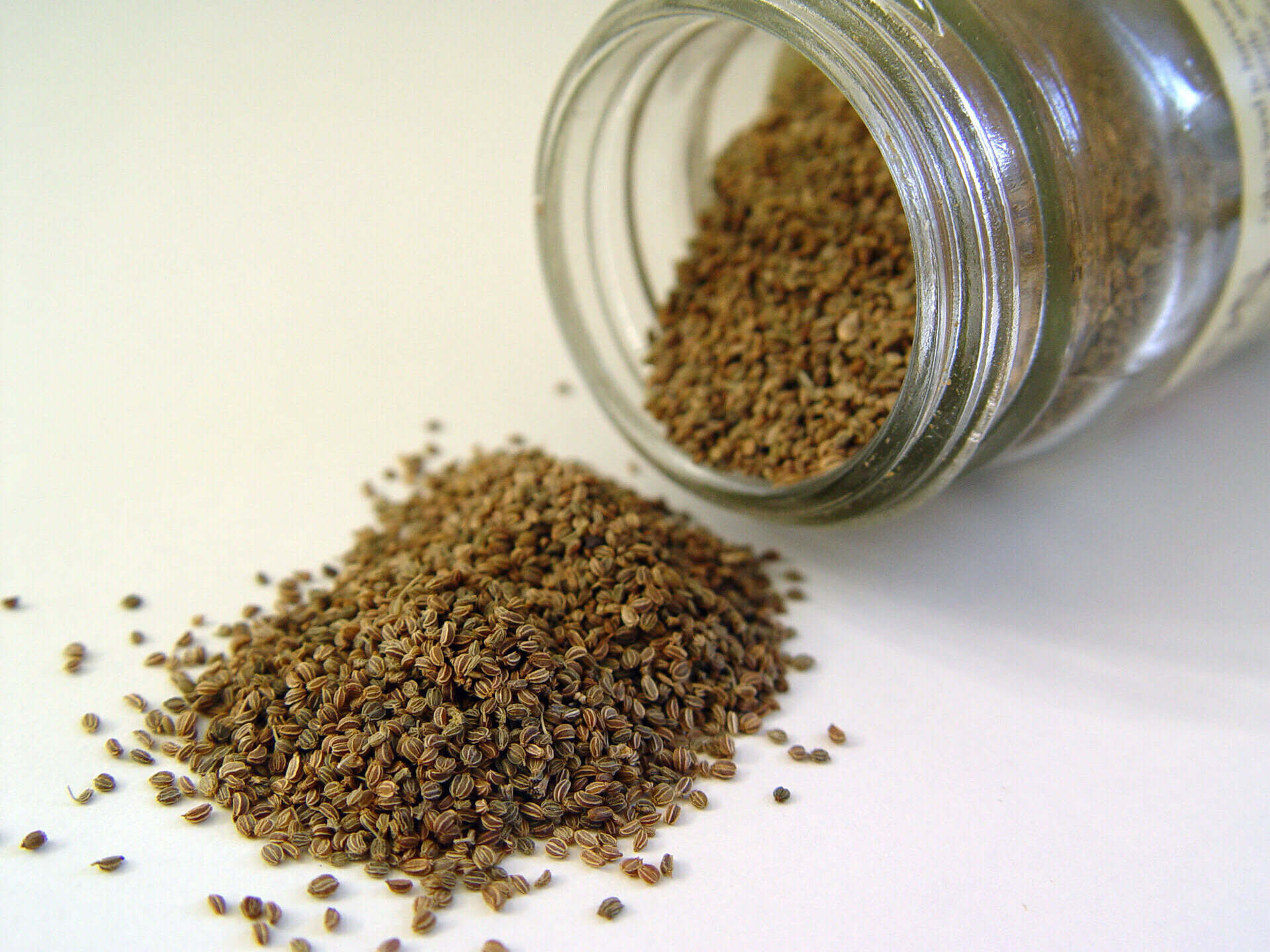
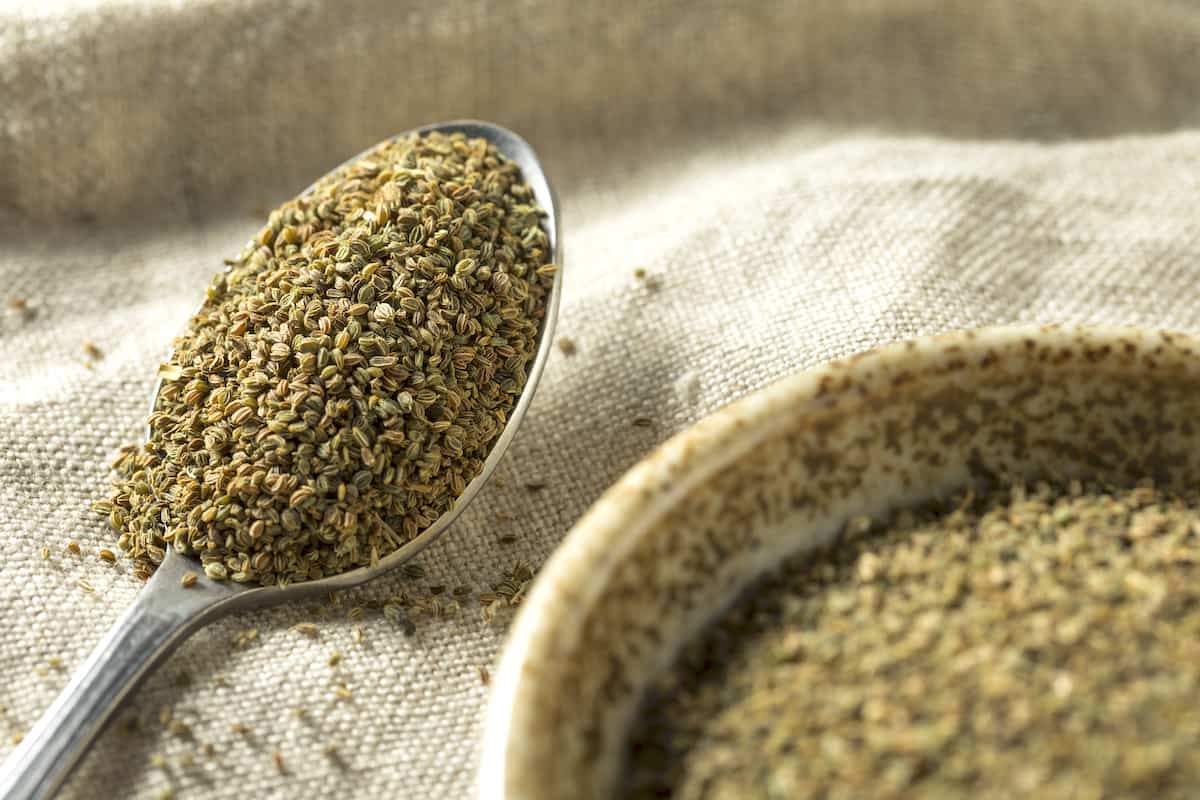


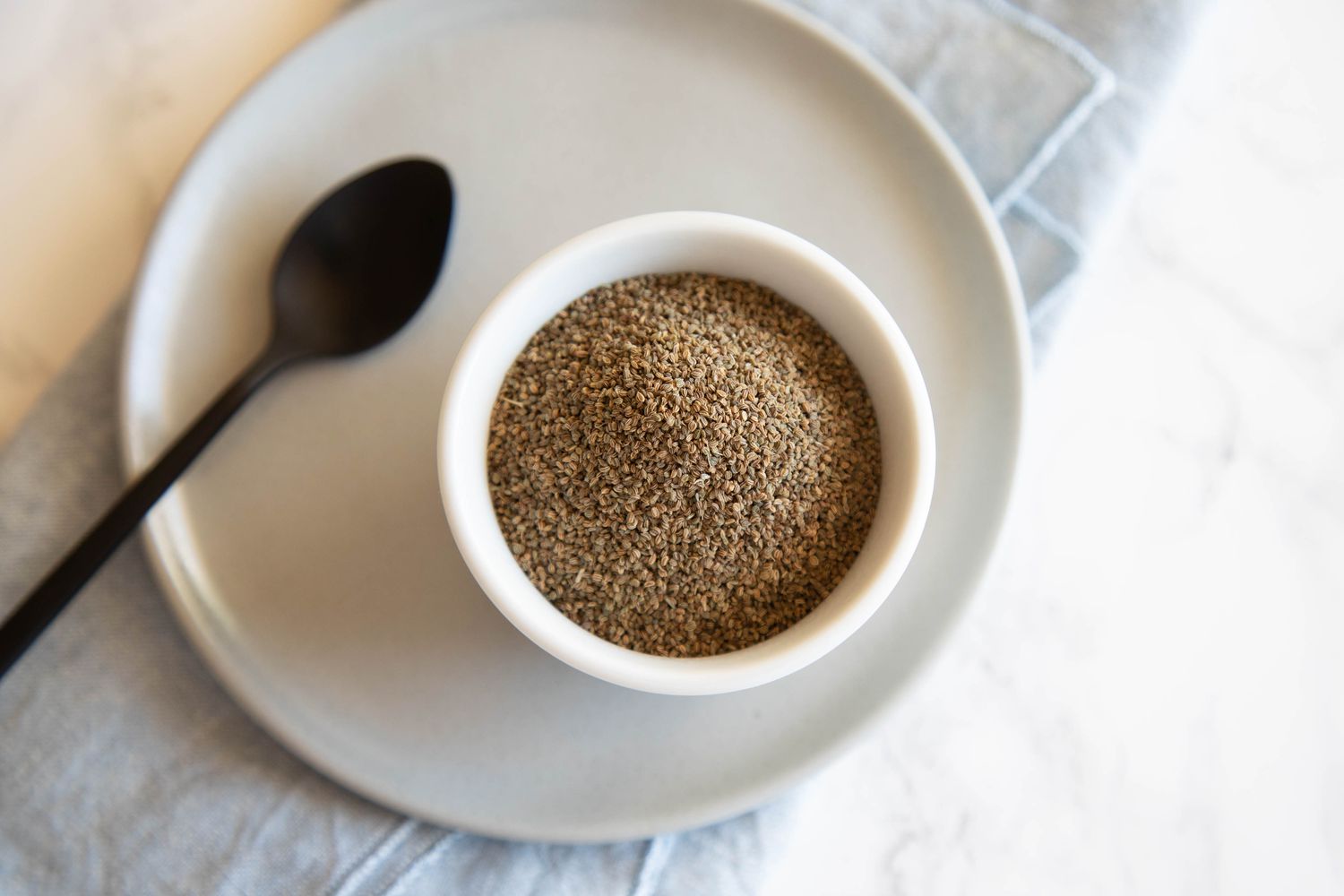


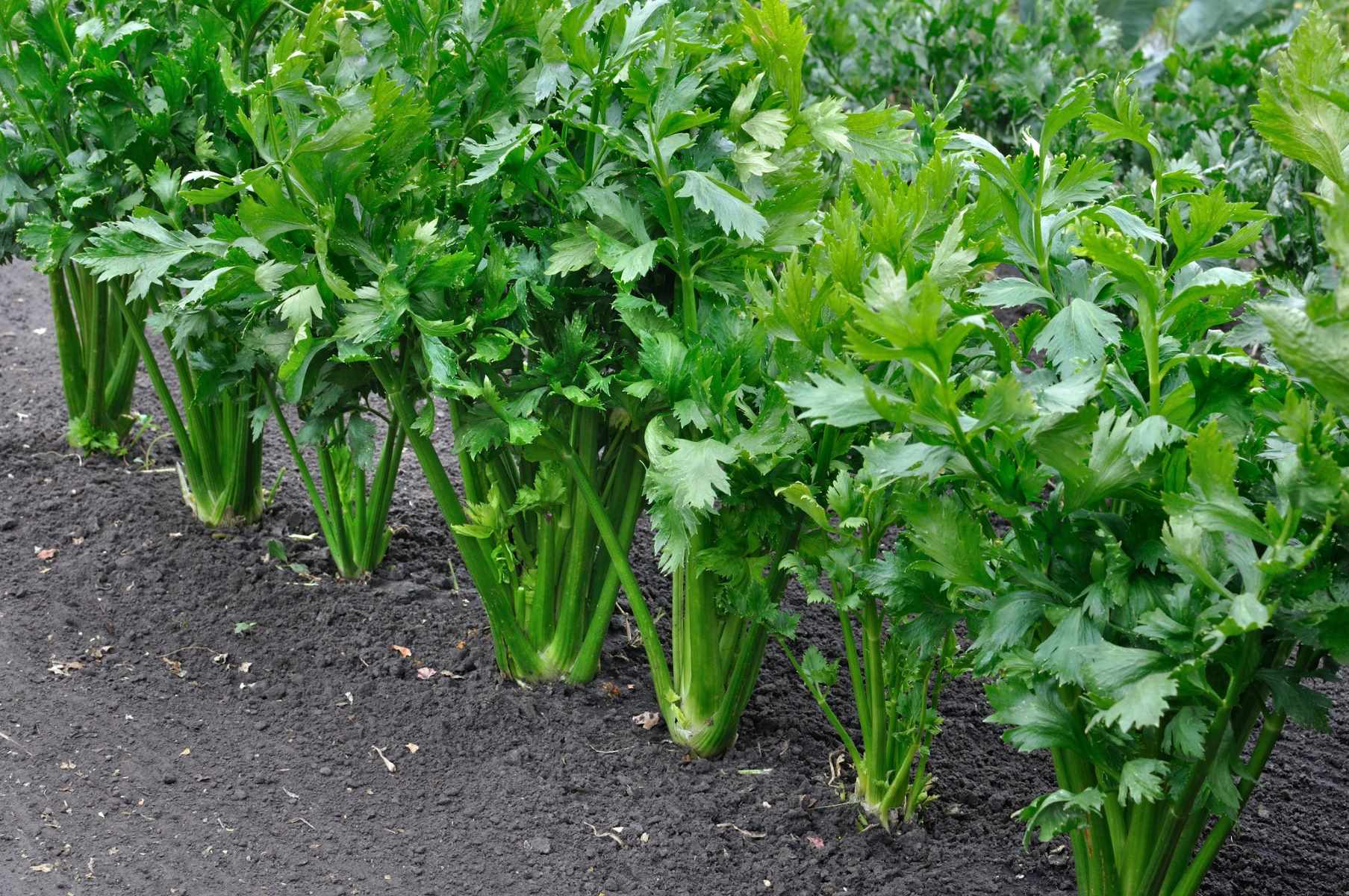


0 thoughts on “What To Use Instead Of Celery Seeds”